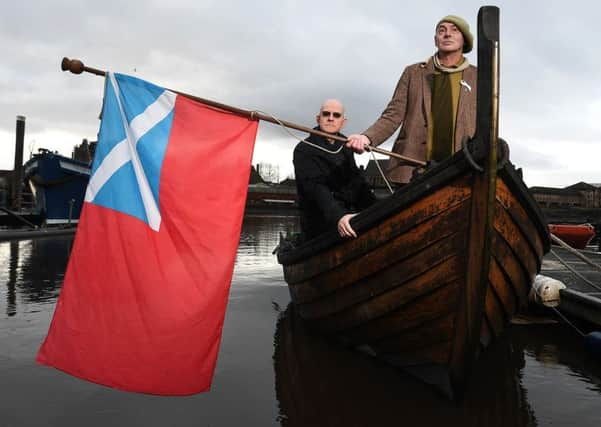Was Robert the Bruce the founder of a Scottish navy?


Alastair Hart, who runs tours from the Fairfield Govan heritage centre, a former shipyard, said it would provide a longer timeline of shipbuilding on the river, before its rise to prominence in the 19th century.
Hart said some evidence had come to light to date, such as of boats being built in the Dumbarton and Cardross areas.
Advertisement
Hide AdAdvertisement
Hide AdRobert I (1274-1329) secured the country’s independence from England, defeating Edward II’s army at the Battle of Bannockburn in 1314, which was followed by the English renouncing their claims on Scotland .
Hart said: “On an amateur basis, I have been looking into the early Scottish navy and Robert the Bruce’s involvement.
“There are a few references from various sources alluding to Robert the Bruce’s maritime activities. It seems that most of his fleet consisted of vessels captured or provided by his supporters.
“There are some hints at shipbuilding or at least outfitting of ships in the Dumbarton area, attributed to him, but little detail.
“Evidence of a shipyard and its output, with details from that period, would be good to add to our timeline summary and picture of Clyde shipbuilding culminating with today’s situation.”
Ian Bogle, a volunteer at Glasgow community boat builders Galgael, creators of vessels such as Orcuan, based on a Gaelic longboat or birlinn, said: “All the clans had their own boats, which were normally used for fishing and trade, and got together when there was a common enemy.
“Robert the Bruce certainly did a lot of fighting in Ireland and the Isle of Man, and his forces would have had to have ships to get there.”
Professor Michael Brown of the University of St Andrews said 14th century kings did not have formal navies: “In terms of powerful, purpose-built warships, it was James IV who would create a Scottish navy.”
Advertisement
Hide AdAdvertisement
Hide AdBut the professor of Scottish History added that Robert would certainly have built ships. He said: “Kings built or bought ships and used them for a variety of purposes, but most vessels could be employed both for trading and fighting.”
He said merchant and pirate ships were also hired or demanded to strengthen royal fleets: “Robert I, like his predecessors as king of Scots, could call on all these measures to provide him with shipping in his wars.
“He used his ships to attack and seize control of the Isle of Man, to transport forces to Ireland and to allow the king to visit Ulster at the end of his reign in 1328.
“There are references to king’s ships at Cardross and Tarbert which suggests that he owned a small fleet of such vessels. His fleets in the west were supplemented by landowners who held their estates from the king in return for providing a galley or more of a specified number of oars.”